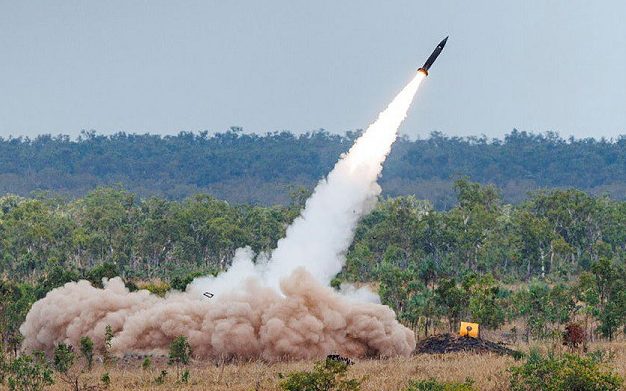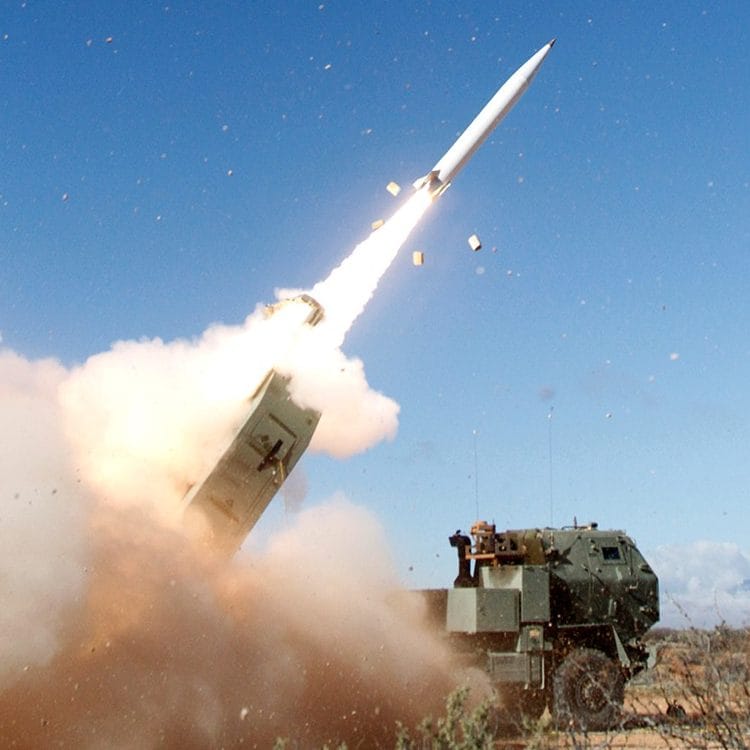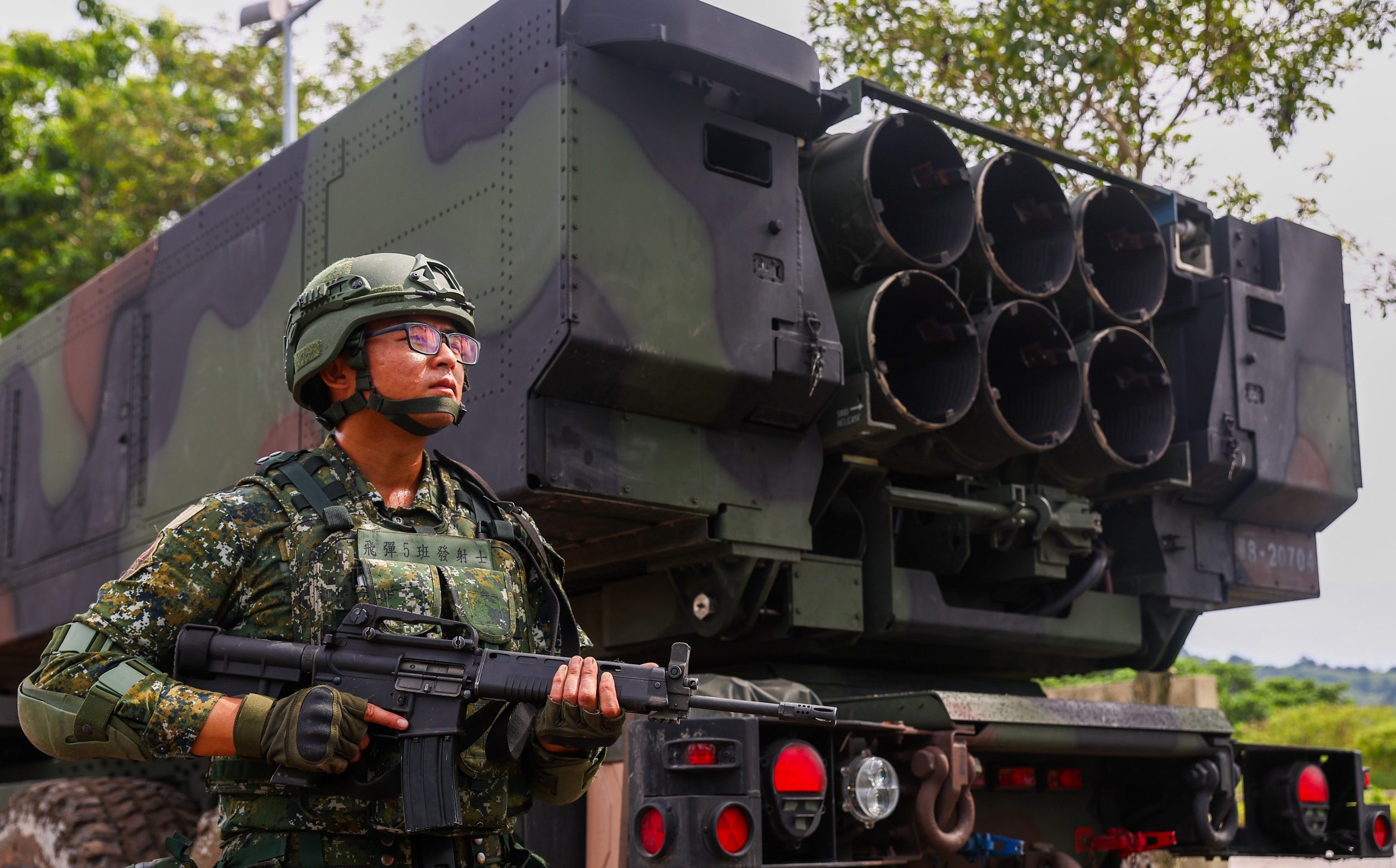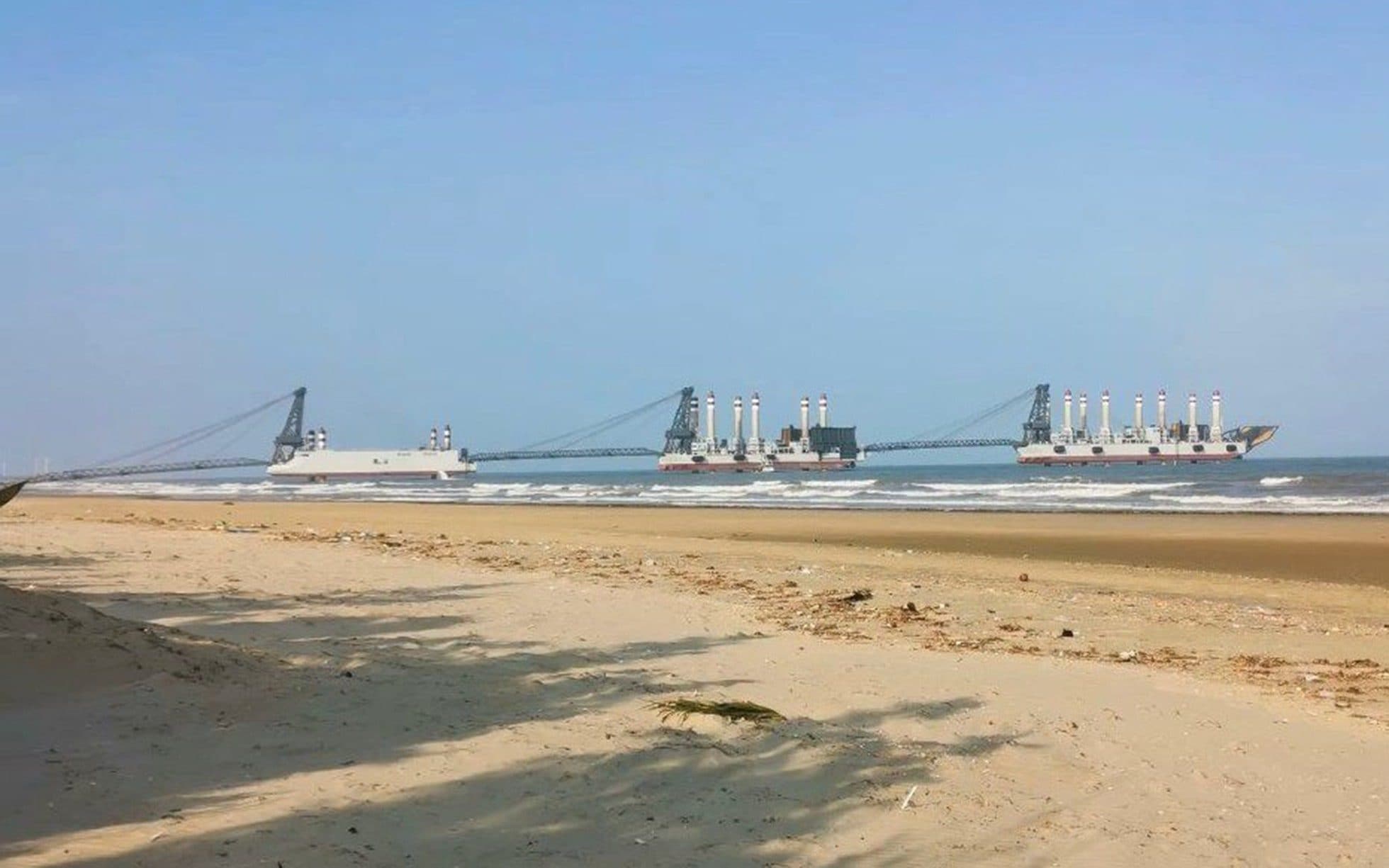
An urgent arms race is happening in the Pacific, escalating as the future of Taiwan remains uncertain.
The United States, along with its allies, is making strategic moves to beat China at its own game, trying to keep Beijing on its toes regarding any potential malicious actions toward Taiwan.
Central to the US’s new strategy is cutting-edge technology capable of delivering significant damage to the Chinese navy: the precision strike missiles (PrSMs, pronounced “prisms”).
Recently tested in Australia, the PrSM hit a target positioned over 190 miles away, which marks a notable event as it was the first time this Lockheed Martin-created missile was operationalized by an ally of the US.
These missiles can be deployed via American Himars or British MLRS artillery systems—weaponry previously used to assist Ukraine in mounting bold counter-attacks against Russian forces.
Transformative Firepower
Historically, these launch systems have utilized Atacms missiles, which boast a limited range of 190 miles and have been in operation for over three decades.
However, the new PrSMs are reported to have a striking range surpassing 300 miles with indications that this range may extend further in upcoming versions. During their recent trial flight, the missiles attained incredible speeds of 4,000 km/h, outpacing the Atacms by an additional 300 km/h.
According to Alex Miller, the chief tech officer of the US Army, each pod can now accommodate two of these precision missiles compared to just one Atacm, significantly escalating their destructive potential. Plus, they’re designed to be less vulnerable to jamming efforts.
These PrSMs leverage advancements in missile technology combined with the agility of systems like Himars and MLRS, which makes them quick and easy to conceal—traits that could wreak havoc on a Chinese fleet attempting an invasion.
Brad Bowman, a senior director with the Foundation for Defence of Democracies, stated, “This presents a tangible challenge for our adversaries, as that system may now not be in the same location in 30 seconds or five minutes… creating a complex dilemma for detection and targeting.”
Both the US and China are escalating their militaries in the Pacific region, especially surrounding Taiwan—an area China sees as integral to its territory despite Taiwan’s de facto independence since the 1940s.
Taiwan Faces Significant Risks
This year, Xi Jinping, China’s premier, declared that “unification” with Taiwan was unavoidable, viewing those across the Taiwan Strait as belonging to the same family.
China consistently intimidates Taiwan with frequent sorties of warships and fighter jets while avoiding open conflict.
At a security summit earlier in May, US Defence Secretary Pete Hegseth highlighted potential imminent threats, warning that a full-scale invasion by China could be closer than anticipated.
The stakes couldn’t be higher for all involved.

If the US fails to keep pace with China in military capabilities, Taiwan could find itself in dire straits as it relies heavily on Washington for protective assurances. Should Taiwan fall to Chinese forces, it would obliterate a vital strategic barrier against Beijing’s territorial ambitions.
However, failing to secure Taiwan coud result in heavy repercussions for China, likely destabilizing Xi’s regime.
As Doug Bandow from the Cato Institute emphasized, a perpetual tug-of-war exists between both countries with each side striving to counter the other’s advancements.
He believes that these PrSMs raise the risk factor significantly for the Chinese maritime fleet. Thus, their potential impact is considerable.

China is acutely aware of the damage that the Himars systems have inflicted upon Russia and is likely viewing the upgraded precision missiles with suspicion.
Taiwan’s current arsenal includes 11 Himars from previous arms purchases with the US, and more are anticipated to arrive by 2026.
According to Bandow, the PrSMs will result in a significant psychological setback for China, even before any signals flares are fired, perhaps persuading Beijing’s leadership to temper their expansionist ambitions.
He stated, “The primary advantage of a weapon upgrade like this is it simply persuades the Chinese leaders repeat ‘Not now… we can afford to wait.’”
Looking forward, the risk to China’s naval assets might heighten, particularly if these PRsMs are stationed across Taiwan and other strategic locations in the first island chain, which incorporates locations like Japan, Indonesia, and certain regions of the Philippines.
Australia Partners with the US
Meanwhile, Australia has also aligned itself with the United States, securing a $310 million investment in the missile program as of June.
Pat Conroy, the Minister of Defence Industry in Australia, noted at this month’s testing, “This initiative aims to enhance deterrence within the Indo-Pacific, signaling to any potential adversary that swift punitive action is assured.”
However, with melodrama unfolding, China is innovating rapidly, having recently initiated construction of barriers resembling D-Day boats for potential invasions, circumventing difficult beach terrains and creating multiple entries for military operations.

Concerns among experts persist regarding the lagging pace of US procurement for PrSMs. Recent Pentagon budget proposals suggest a purchase of only 44 units from Lockheed Martin.
Miller reiterated: “New capabilities aren’t typically gamecaters on their own, but this is vital tech for the US and its allies. It’s crucial to sink Chinese vessels from adaptable, ground-mobile platforms.”




















